NASA's $985 million Psyche mission to all-metal asteroid nears liftoff
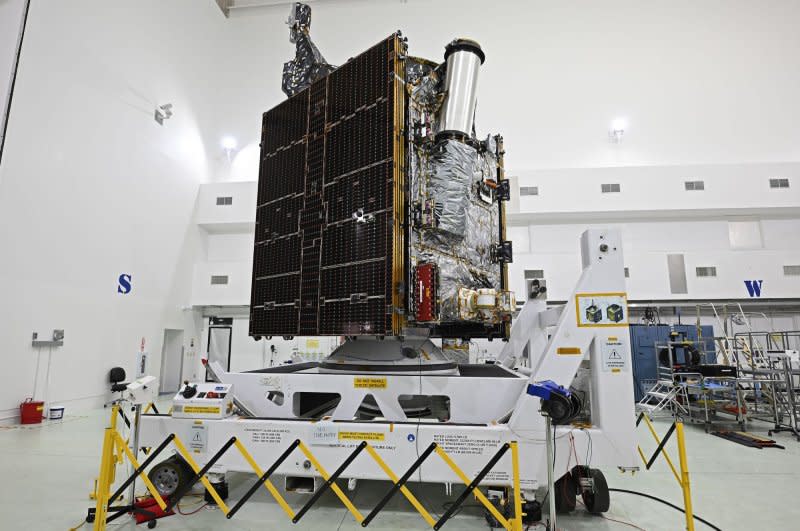
CAPE CANAVERAL, Fla., Aug. 14 (UPI) -- Preparations are proceeding for the early October launch of a NASA orbiter that uses futuristic electric propulsion technology for a rendezvous with 16 Psyche, the heart of a demolished planet believed to be made almost entirely of iron.
Named after its interplanetary target, the $985 million mission is intended to help scientists determine whether the 140-mile-wide asteroid -- which varies between 235 million and 309 million miles away -- formed like Earth.
The Psyche spacecraft, at 10 feet-by-8 feet, is scheduled to lift off Oct. 5 aboard a SpaceX Falcon Heavy rocket from Kennedy Space Center in Florida. That will accelerate the probe to the speed it needs to escape the gravity wells of Earth and the sun.
Then, the sophisticated space probe will start one of its four Hall-effect thrusters to accelerate toward its final destination.
Called ion propulsion, its technology involves using solar electrical power to generate electromagnetic fields for charged xenon gas.
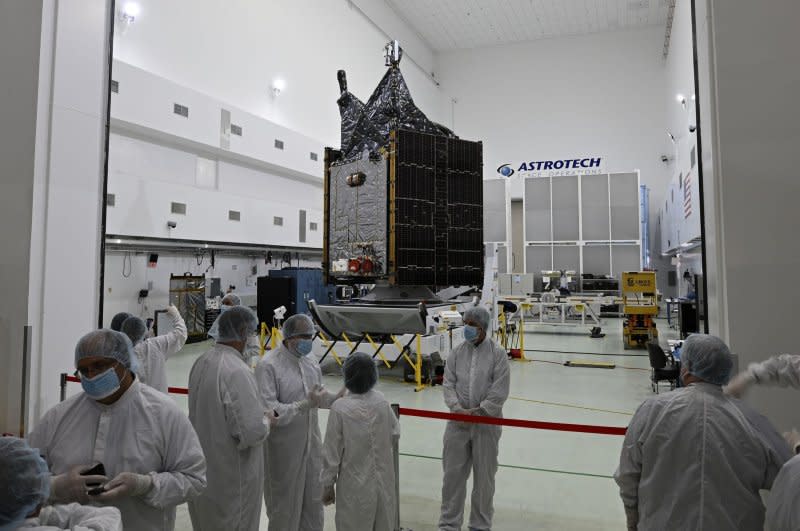
Essentially, the electricity from the solar panels is used to convert the xenon gas to xenon ions, which are expelled to provide a very low thrust. The engines will run one at a time, for two years.
Psyche's mission was originally scheduled to launch in October 2022, but was delayed by flight software issues. That software recently passed muster and has been installed onto Psyche's systems.
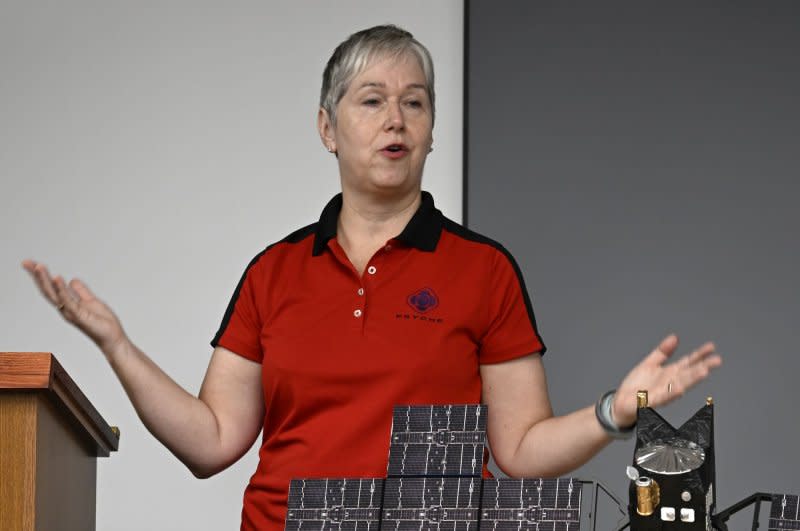
JPL manages mission
Led by Arizona State University. NASA's Jet Propulsion Laboratory in Pasadena, Calif., is responsible for mission management, operations and navigation.
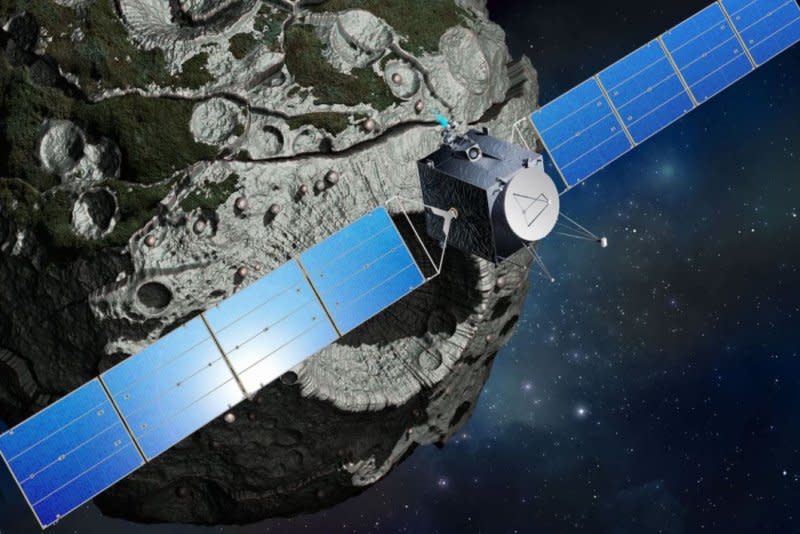
The spacecraft's solar-electric propulsion chassis was built by Maxar, with a payload that includes an imager, magnetometer and a gamma-ray spectrometer.
As part of its mission, Psyche will gather topographical and chemical composition data, looking for evidence of a magnetic field. Planetologists believe Psyche may still have one.
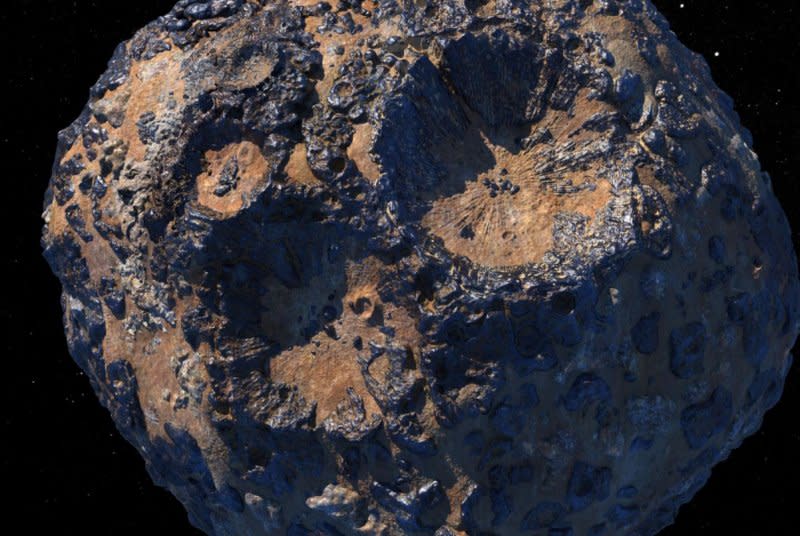
The most important mission goal is to establish how planets like Earth could be the result of overwhelming numbers of primordial matter collisions and debris accumulation over eons.
NASA officials were so excited by Psyche's prospects that they showed off the spacecraft last week at the Astrotech Space Operations Facility in Titusville, Fla., not far from the space center.
Scientists explained to lay observers the importance of the mission.
"All of the planets were formed in the flash of a second and it was a very chaotic period," said JPL's Henry Stone, manager of the systems engineering section. "We cannot drill down and study the core of the Earth."
Finding a body such as 16 Psyche, still in those primeval conditions would validate scientific hypotheses about the birth of the solar system, Stone said.
The asteroid was discovered on March 17, 1852, by Italian astronomer Annibale de Gasparis, a professor of astronomy at Naples University. It was named after the Greek god Psyche.
For decades, dynamic models and hypotheses predicted that in the solar system's creation, one or two planetoid cores crumbled and separated from their rocky mantels, as Psyche likely did.
Validation of model
"If we determine that that was the case, then we can conclude that, yes, that theoretical model of that early start of the solar system is now validated," Stone said. "The presence of a magnetic core and a magnetic field is what makes life possible on Earth."
But there is more than cosmological learning involved in this research, said Lindy Elkins-Tanton, Psyche principal investigator from the School of Earth and Space Exploration at Arizona State University at Tempe.
"If you can get a measurement of Psyche, then you got the original material in its original state, and then many, many of those Psyches make added up to make our Earth," Elkins-Tanton said.
"We know something about the composition of our Earth's core from remote sensing, and I think it should be a little bit different from the composition of Psyche," she said.
"Getting from one to the other is going to tell us about the process that led from no planet to planet."
It is a fundamental question about all solar systems, Elkins-Tanton said. "How do you create a habitable planet and what happens for one to become inhabitable?"
Once in Mars' vicinity, Psyche will get a so-called gravity assist that will hurl it toward the asteroid belt -- halfway between the orbits of Mars and Jupiter -- to the encounter 16Psyche. By then, it will be August 2029.
The spacecraft will go into orbit around 16 Psyche, along a descending path, 435 miles above the surface. In this initial phase, it will spend two months mapping the asteroid's surface and looking for evidence of a magnetic field.
Determining the size
At this stage, the mission will be essential for scientists to determine the size of the asteroid -- some sort of asymmetric potato, as Elkins-Tanton described it.
Gradually, Psyche will lower its orbit to 180 miles from the surface, performing topography observations, looking for evidence of a magnetic field that may have survived Psyche's demise.
The spacecraft will descend to 110 miles from the surface to perform gravitational studies. Finally, the probe will lower to its final orbit, 53 miles from the surface, to establish its chemical composition via gamma-ray and neutron spectrometers, collect images and gravity readings, and search for magnetic fields, of course.
The whole mission circling 16 Psyche is expected to last 21 months.
One ride-along experiment will test advanced laser-based communications techniques. Called Deep Space Optical Communications, the equipment will carry massive amounts of information.
This innovative technology will be vital during human exploration missions to Mars, said Abhijit Biswas, the DSOC Program system engineer at JPL.
"We need to keep updating our technology so we can enable future science missions with high-resolution data," Biswas said. "To do that, we need faster communications; we need lasers.
"You may recall the days when we used dial-up modems to go online. From that, look at us today. We have high-speed connections, we can stream videos and multiple feeds," he said.
"For outer space, we want to have virtual presence, and to do that we need faster, laser beam communications that will help us achieve that."

